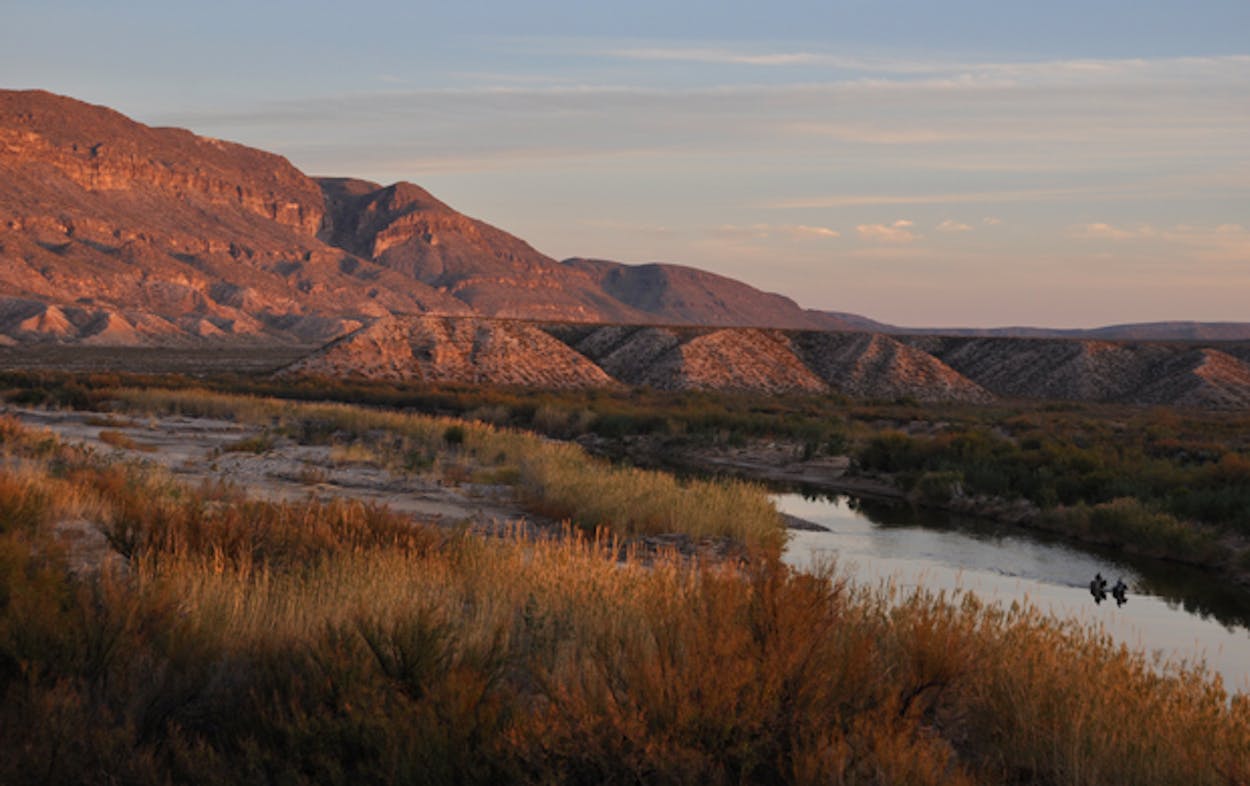Federal officials plan to reopen the border crossing from Big Bend National Park to the Mexican town of Boquillas del Carmen next spring. At this high-tech port of entry, visitors will enter Customs and Border Protection kiosks to scan their identification and speak remotely with a customs officer more than one hundred miles away at the nearest manned border crossing.
While no customs officials will staff the site, rangers with the National Park Service will be on hand to greet visitors and give them information about the park, Christopher Sherman of the Associated Press reported.
For decades the informal border crossing across the Rio Grande was a favorite of American tourists, thousands of whom crossed in a small metal boat every year to indulge the “drowsy pleasures” of Carta Blanca, conjunto, and tacos in the tiny town dotted with adobe buildings a mile away from the river. As Robert Draper described in 1997 when he love letter to the informal crossing for Texas Monthly:
A $2 round-trip fee gets you into a rowboat, a porous metal relic that rocks precariously in the river the moment you step in. The boatman paddles against the current—or, in low-water season, he wades across, pulling the boat and its passengers the thirty-yard distance. Upon disembarking, you are asked by a member of the welcoming gaggle if you would like a ride into town. Taking the mile on foot is certainly possible, though the heat is unsparing and $3 will buy you a space in the back of the truck. But the most common method is to rent one of the donkeys stalled beside the river for $3 and trundle through the desert scrub in a proper state of humility, routed onward by the boy who trots along on his own mount, swatting the rear of your steed with a mesquite branch.
The town’s two hundred residents would cross into the U.S. to buy groceries and other essentials at the Rio Grande Village store. “They don’t have any electricity over there. So they would come here and buy frozen chicken, cake mixes and things that they couldn’t get over there,” Gary Martin, manager of the Rio Grande Village store, told Sherman.
Residents on both sides generally regard the border as porous, but most of these crossings were closed in May 2002, when the feds shut the border out of concern that a terrorist could slip across the border unnoticed. The crossing closure shrunk the town, with the population dropping some 42 percent from 2000 to 2010, Sherman reported. Currently, the nearest legal entry point to the U.S. from Boquillas is 240 road miles away, and the nearest Mexican town of Melchor Muzquiz is 150 miles away. A bus runs there once a week.
The $2.3 million port project is open for public comment until December 27, but the National Park Service is a strong proponent of the project, pointing to U.S.–Canadian border, which has similar crossings. It would also expediate certain processes for park rangers; when they need to meet with their counterparts across the border the rangers have to make a “circuitous 16-hour drive” to see them, Sherman wrote.
“We think we can do this without doing any damage to national security and possibly enhance security along the border by having better intelligence, better communication with people in Mexico,” William Wellman, Big Bend National Park’s superintendent, told Sherman.
“Support for reopening the Boquillas crossing surely was aided by the fact that the Big Bend country is relatively quiet,” NPR’s John Burnett noted back in January when he covered the decision to reopen the border crossing.
While the project has “support at the highest levels of government from both countries,” it predictably also has its detractors, which include House Homeland Security committee member U.S. Representative Michael McCaul, of Austin. “We need to use our resources to secure the border rather than making it easier to enter in locations where we already have problems with illegal crossings,” McCaul wrote Sherman in an email. Conservative bloggers slammed the decision, including Doug Ross quipped at Director Blue. “I think we already have an ‘unmanned border entry’—it’s called the entire Southwest,” he quipped.
Burnett noted that the Boquillas would be the second ferry crossing on the U.S. border with Mexico. (In November, the New York Times’ Damien Cave wrote about his trip abroad El Chalan, the only ferry that currently takes passengers across the Rio Grande, which runs daily between Los Ebanos, Texas, to Gustavo Díaz Ordaz, Mexico.)
Many Texans view Boquillas with a certain romanticism, and Robert Earl Keen even wrote “Gringo Honeymoon” about a trip he took to the town.







